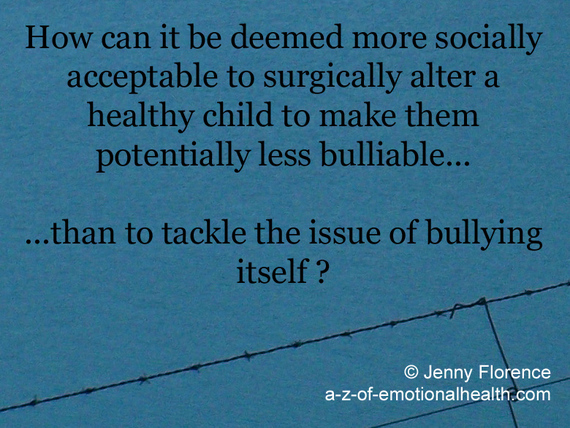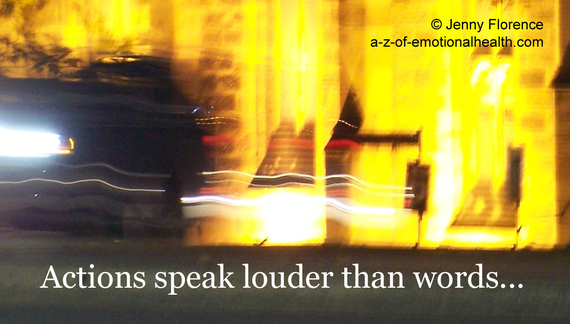Actions Speak Louder Than Words. A Social Acceptance of Bullying.
In everything that we do, we communicate powerful emotionally charged messages and powerful emotionally charged statements. As the saying goes; "actions speak louder than words".
Sometimes there is a discrepancy between the values that we verbally state and the values that we actually demonstrate through our actions, or indeed through our in-action or our inability to act. Sometimes, inadvertently we can accept the unacceptable and let it go without challenge or reflection. Sometimes socially accepted attitudes unintentionally condone, and indeed support, the very things that we openly disagree with, such as singling out difference, prejudice and bullying. I recently came across a really good example of this.
A young couple had been trying for a baby for some time so when their beautiful little son arrived, a lovely, healthy, gorgeous little boy, clearly this was an event of considerable joy. What shocked me was the response of a close friend of the couple, a young mother herself. Just like his mum, the new baby had ears that stick out. This close friend openly voiced that having seen the new baby, that the only thing that she could think about was, "will they have his ears pinned back?" and "how soon might they do this?" In her view the Mum had "managed to get away with it" because girls can grow long hair to cover their ears, however for a boy this would not be the case.
Now I am certain that her intention was well-meaning and her concern was actually to ensure that this child would be protected from being bullied or targeted for his appearance. However, whilst unintentional, it is exactly this kind of attitude that buys into and validates a culture that focuses on appearance and singles out any difference as a disadvantage or as a disability. Routinely adjusting the appearance of a lovely healthy child validates this kind of targeting and bullying as acceptable and indeed "normal".
We need to question how it can be deemed more socially acceptable to surgically alter a child to make them potentially less bulliable than to tackle the issue of bullying itself.
In everything that we do and in everything that we say there are many layers of communication taking place. I've talked more about this in another blog. Our actions demonstrate powerful messages and it's these messages that validate and give cohesion to social and cultural attitudes. Even if our actions are fueled by the very best of intentions; when the things that we do demonstrate an acceptability of something, there is always a powerful underlying message that is being reinforced and stated. I am particularly interested in the messages that we pass on to our children and to the next generation.
At a toddler group age I guarantee that this child will not be singled out. At this early stage of growth and development children are relatively unaware of difference other than in a manner that is naturally curious. At this age curiosity has not yet been tarnished by attitudes of prejudice. The singling out and targeting of difference comes later as children grow and embrace the values that are being demonstrated to them. We learn through experience and children absorb more through demonstration than through the verbal messages that we give them.
We can pass verbal messages on to our children, we can give them good values, we can tell them that bullying is not acceptable and that is not okay to hurt people. But when our attitudes and our actions adapt to fit into a culture of judgement and bullying then we are upholding and colluding with the very things that we verbally oppose and in doing so we reinforce a society in which a lack of emotional awareness and a lack of empathy is "the norm".
Is this what we wish to demonstrate this to the next generation?
I am sure that we are all familiar with the term "our carbon footprint." We also have an" emotional footprint". We both inherit and create an emotional footprint; it's an emotional legacy; and like a timeline it stretches back into our history and it stretches ahead in front of us. When we are born we stand in the shape of our parent's footprint, and this can become part of our blueprint or a foundation stone in our emotional attitudes. As we journey through our own lives emotional experience is continually informing and shaping us, altering and adapting the footprint that we will then pass on to the next generation.
Human beings are emotionally driven; pick up any newspaper and you will read about highly charged emotionally fueled actions. The underlying communications that we both absorb and demonstrate are one of the many ways in which we pass on a powerful legacy. Developing our ability to notice and consider these underlying messages will alter the shape of the footprint that we leave behind, and therefore the shape of the world that our children will live in.

